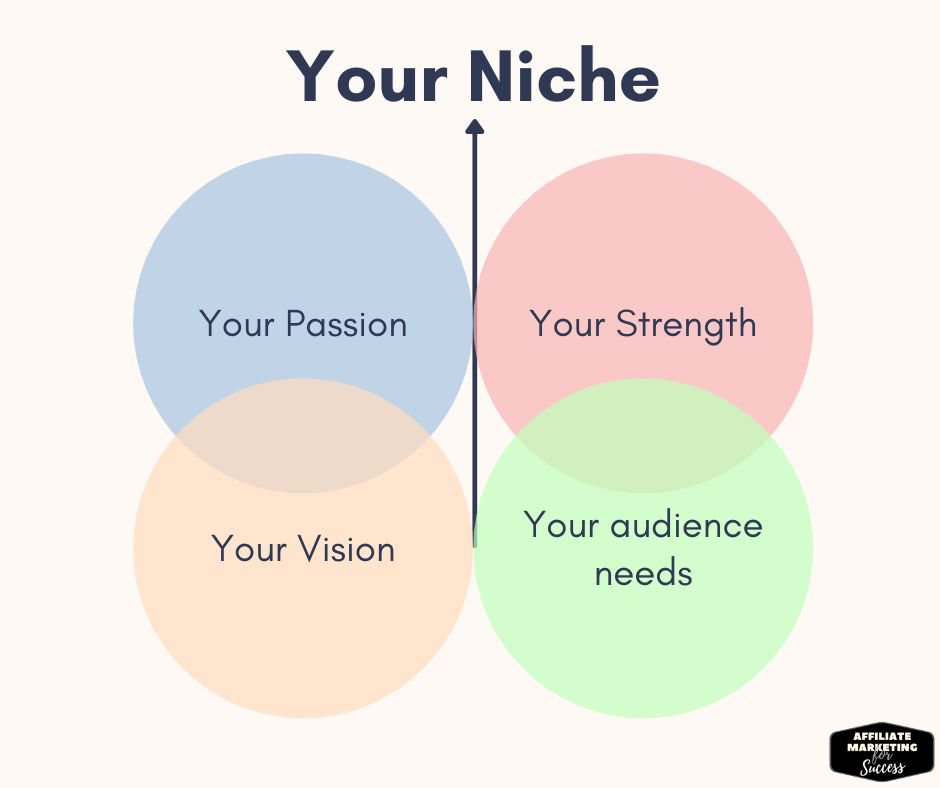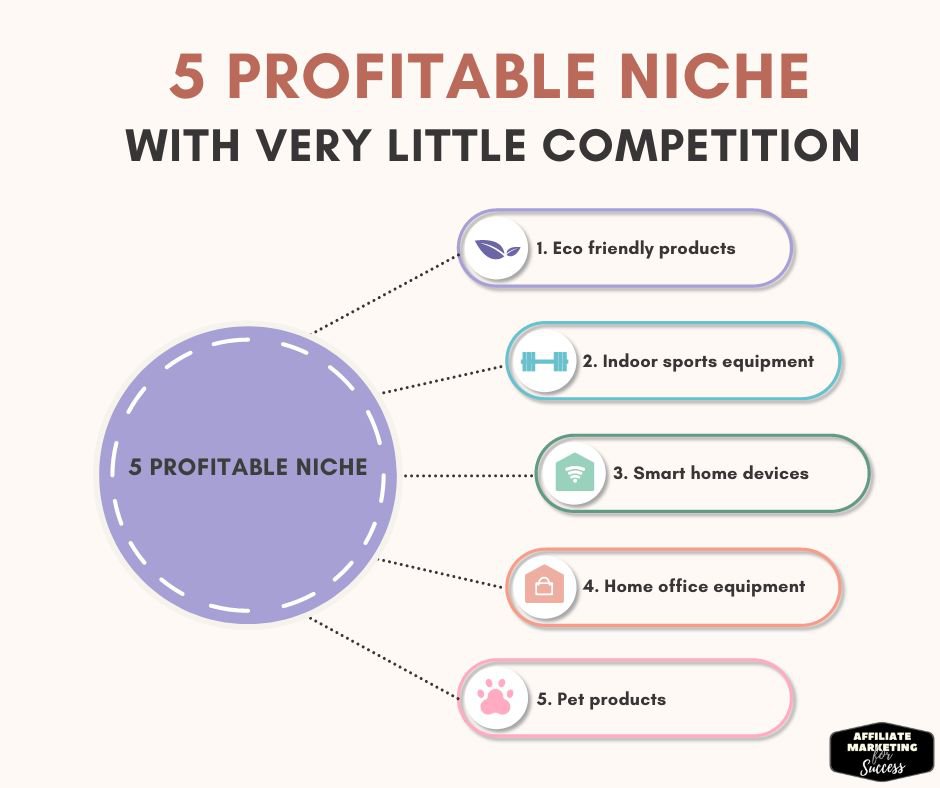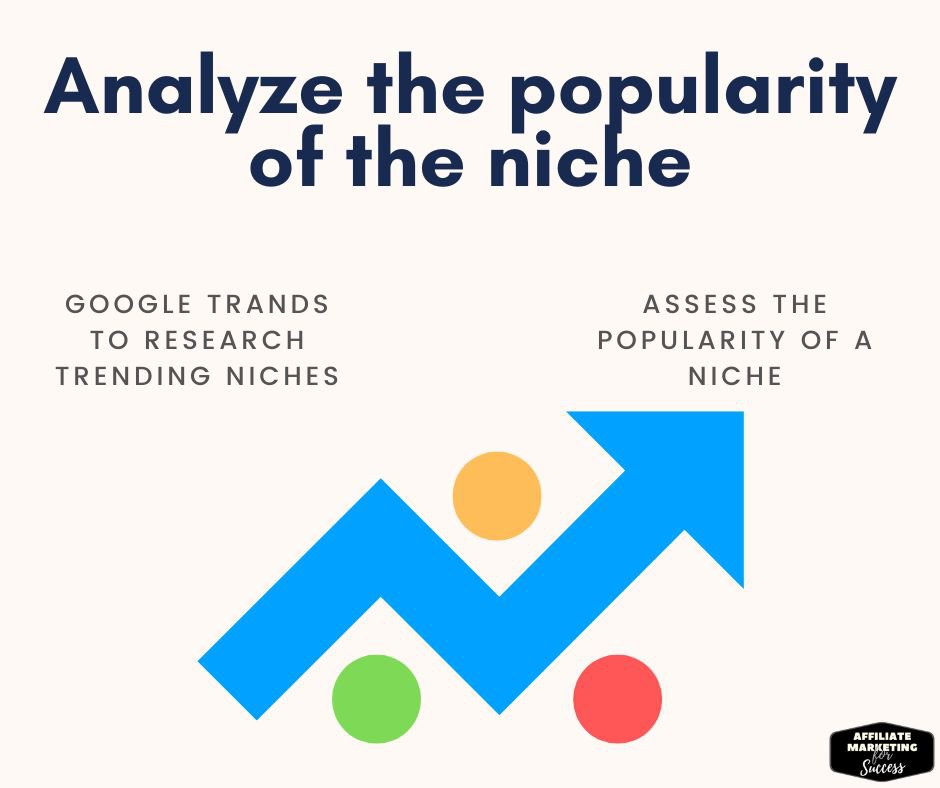Affiliate Niche: 7 Proven Steps to Your Ultimate Goldmine
Did you know that 72% of online businesses fail because they target the wrong niche? (Source: HubSpot, 2023). Worse, beginners often waste 6+ months and thousands of dollars chasing trends instead of validating real profit potential. Choosing your niche isn’t about following passion alone—it’s about strategically aligning what you can do with what people will pay for.
Within the next 10 minutes, you’ll discover a proven 7-step framework used by top affiliate marketers to identify niches with high demand, low competition, and explosive profit potential—even if you’re starting from zero. Stop guessing and start building a business that lasts.
Key Takeaways
-
-
The Passion Trap Fix: Combine your interests with cold, hard market data using the “Passion-Profit Matrix” (we’ll build yours in Section 3).
-
$50 Validation Test: How to confirm demand before creating content (no audience required).
-
Beginner Goldmines: 3 underserved niches with high buyer intent and low competition (2024 data).
-
Avoid the “Shiny Object” Death Spiral: Use our “Niche Viability Scorecard” to filter opportunities objectively.
-
AI-Powered Niche Scouting: Leverage free tools like Perplexity AI to uncover hidden opportunities 10x faster.
-
Future-Proofing Secret: How to build “niche clusters” for scalable income (works even if algorithms change).
-
The Hidden Truth About Choosing Your Niche
Myth-Busting Reality Check
Think “follow your passion” is niche advice? That’s how you end up blogging about underwater basket weaving to an audience of three. The truth: Profitable niches exist where passion intersects with urgent customer pain points and proven spending habits. For example, the “Sustainable Home Office” niche exploded by 300% post-pandemic by solving remote workers’ very real struggles with productivity and ergonomics (Statista, 2024).
Industry Secrets Top Marketers Won’t Tell You:
-
The “Problem Gap”: Most beginners target broad topics (e.g., “fitness”). Winners dominate micro-problems (e.g., “kettlebell workouts for desk workers with back pain”).
-
Buyer Psychology: People pay fastest to avoid pain (e.g., “fix my credit”) or gain status (e.g., “premium coffee brewing”). Use this to gauge monetization ease.
-
The Platform Paradox: A niche thriving on TikTok might starve on Google. Match your niche to platform-native behaviors—visual niches crush Pinterest and Instagram, while complex B2B niches dominate LinkedIn and SEO.
Actionable Insight: Use Google Trends’ comparison tool to spot rising sub-niches. Example: Compare “yoga” (flat) vs. “trauma-informed yoga” (up 190% in 2 years).
Step 1: The Brain Dump – Unearthing Your Hidden Talents (and Interests)
Before you even glance at Google Trends or get seduced by shiny keyword research tools, look inward. What gets you going? What are you weirdly good at? What problems have you wrestled with and conquered?
This isn’t some touchy-feely exercise; it’s practical. You’ll be churning out content ideas like a machine, and if you pick something you despise, you’ll be miserable faster than you can say “keyword stuffing.”
This is the main reason most people fail. Most affiliate marketers fail to choose the right niche.
Seriously, think about:
- Hobbies (even the ones you hide from your friends).
- Skills you’ve honed over the years (maybe you’re a spreadsheet ninja).
- Hard-won battles (did you finally conquer your fear of public speaking?).
- Stuff you geek out on (no judgment here).
- Areas where you’re constantly dishing out advice to people – career advice, relationship advice, how to train a stubborn chihuahua… anything goes.
Don’t dismiss anything yet. The more familiar niche you explore, the easier it’ll be to connect with your target audience on a genuine level. Authenticity sells, even online.
Step 2: Espionage 101 – Smart Competitor Reconnaissance
Got your list of potential niche ideas? Good. Now, it’s time to play detective. This isn’t about ripping off the competition; it’s about understanding the competitive niche battlefield. It’s about finding the gaps, the opportunities, the places where *you* can dominate. Building a good affiliate marketing website is about knowing your enemy.
Mastering the Art of Google-Fu
Become one with the Google search bar. Type in your ideas. Watch those auto-complete suggestions like a hawk – they’re pure gold, revealing popular keywords people are actually using. What should you be hunting for?
- Ads, ads, ads (advertisements on search queries): If businesses are shelling out cash for ads, that’s a flashing neon sign screaming “profitable niche business!”
- Existing Niche Sites Galore: A flood of websites and blog posts? Yeah, it’s competition. But it’s also *proof* that people care. Don’t be intimidated; be *inspired*. You will have to fight, but there are many ways to boost the ranking on search engines.
- Forum Frenzy: Are people buzzing with questions on forums like Reddit and Quora? Jackpot! That’s your audience, practically begging for solutions.
- Amazon Abundance: Can you find a boatload of relevant products to promote? Cha-ching! Affiliate gold.
If you use all the available marketing tools, you will get a better perspective.
Harnessing the Power of Google Trends
Google Trends isn’t just a fancy graph; it’s a crystal ball (sort of). It reveals the search volume and, crucially, the *trend* of a keyword or topic over time. You’re looking for steady or, even better, *rising* interest. Avoid anything that’s sinking faster than the Titanic. Trend analysis is your secret weapon; use it wisely. And combine this with the power of Exploding Topics!
Step 3: Keyword Research – The Key to the Kingdom (of Traffic)
Keyword research is *non-negotiable* for search engine optimization (SEO). It’s how you discover the *exact* phrases people are typing into search engines when they’re looking for what you offer. This is where you start to sift through your potential niches and find the gems.
Thinking Like Your Ideal Customer (Because You Kind Of Have To)
Imagine you’re *desperate* for information in your chosen niche. What would *you* type into Google? Get specific. Get granular. Think:
- Long-Tail Keywords: These are the gold nuggets. Longer, more specific phrases (e.g., “best noise-canceling headphones for studying under $100”). Less competition, more targeted traffic.
- Transactional Keywords: These scream “I’m ready to buy!” (e.g., “where to buy organic dog food near me,” “discount code for yoga teacher training”).
- Informational Keywords: These are your bread and butter for building trust and authority (e.g., “how to fix a leaky faucet without calling a plumber,” “benefits of meditation for anxiety”).
Unleashing the Power of Keyword Research Tools (Yes, They’re Worth It)
Don’t even think about relying on guesswork. Get yourself a decent keyword research tool. It’s an investment, not an expense. These tools will blow your mind with:
- Monthly Searches: A rough estimate of how many people are searching for a keyword each month.
- Keyword Difficulty: A measure of how tough it is to rank for a particular keyword (lower is better, obviously).
- Related Keywords: A treasure trove of additional keyword ideas you probably never would have thought of.
- SERP Features Very important! What kind of result shows Google?
Your mission: find that sweet spot – keywords with enough search volume to be worthwhile, but not so competitive that you’ll be buried on page 10 of Google. This is how you attract that sweet, sweet organic traffic and start building a genuinely successful business. And remember that keyword stemming is important too!
Resource:
- Ahrefs (Powerful, paid)
- SEMrush (Another powerhouse, also paid)
- AnswerThePublic (Great for brainstorming content ideas)
- Ubersuggest (Freemium option)
Step 4: The Money Question – Show Me the Monetization!
A niche might be fascinating, but if there’s no clear path to revenue potential assessment, it’s a passion project, not a business. You’re not here to amass a collection of digital seashells; you’re here to make money. Don’t kid yourself about making millions of dollars overnight, but a solid income? Absolutely possible. You need to plan your monetization strategy, and discover the best monetization strategies for your blog.
Affiliate Marketing: Your (Potential) Golden Goose
Affiliate marketing is often the go-to monetization method for a reason – it works. You promote other companies’ stuff, and you get a cut of each sale. But it’s not a free-for-all. You need:
- Relevant Products: Are there products or services that *directly* address the pain points and desires of your audience? Don’t promote random junk just because it has a high commission.
- Decent Commission Rates: What percentage will you actually earn? Aim for programs with worthwhile commission rates – don’t waste your time for pennies.
- Trustworthy Companies: Partner with reputable businesses that offer genuine value. Don’t tarnish your reputation by promoting shady products. Consider established platforms like Commission Junction.
Popular affiliate niches – they’re popular for a reason:
- The evergreen Money Niche / Finance niche: Everyone wants to make money!
- The always needed Relationship niche: People will always look for ACTIONABLE advice!.
- A good Niche for Blogging: Find a niche, and make money blogging.
- The Technology Niche: Always in demand.
Some good options for specific niche business could be:
- Niche for dropshipping. If you don’t like affiliate.
- Niche for Affiliate marketing. The best, and most profitable.
- A focused, specific online niche
- The perfect blog niche for you. You need to find it.
- An specific Target niche that you identify. It has to be *your* niche.
Beyond Affiliate: Diversifying Your Income Streams
Affiliate marketing is great, but don’t put all your eggs in one basket. Explore other avenues:
- Your Own Products: E-books, online courses, software, physical products (if you’re feeling ambitious). This gives you *full* control and higher profit margins.
- Advertising: Display ads on your website (requires *significant* traffic, so don’t rely on this early on).
- Sponsored Content: Partner with brands to create sponsored posts or reviews (build your authority first).
- Affiliate Email Marketing Platform: Promote what works for you.
Remember that you need to have a plan. Generating good content is paramount.
Step 5: The Niche-Down – Getting Laser-Focused
The more specific your niche, the *better*. A narrow niche lets you target a hyper-specific audience, making it easier to rank in search engines and build a devoted following. A broad niche is a recipe for getting lost in the noise. And it is better to have a niche-specific content.
Let’s get real with some examples:
- Broad Niche (Avoid!): “Health,” “Relationships,” “Making Money” (Way too general!)
- Better (But Still Broad): “Vegan Diets,” “Online Dating,” “Freelancing” (Getting warmer…)
- Laser-Focused (YES!): “Vegan meal prep for busy professionals,” “Online dating for introverted men over 40,” “Freelance copywriting for tech startups” (Now you’re talking!)
- Even *More* Focused: “Keto Meal Prep for Women over 50 with limited cooking time and budget”
Find that underserved market segment, that passionate little tribe. That’s where you can become the go-to expert and build a thriving entire business around a specific topic. The more specific, the better your chances of success. Find the perfect strategy to create a blog.
Advanced Strategies: Leveling Up Your Niche Game
Okay, you’ve got the basics. Now let’s get into some more advanced tactics:
- Shoulder Niches: These are niches related to your main niche, but not directly competitive. For example, if your niche is “organic gardening,” a shoulder niche might be “DIY composting” or “natural pest control.” This expands your reach and content opportunities.
- Reddit Research: Don’t underestimate Reddit. It’s a goldmine for finding passionate communities and identifying unmet needs. Search for subreddits related to your potential niches and see what people are talking about, complaining about, and asking for.
- Pain Point Identification: The most successful niches solve a specific problem. What are the biggest frustrations, challenges, or desires of your target audience? The more clearly you can identify and address those pain points, the better. Use a content idea generator if you need to.
- Use Exploding Topics: Use this amazing tool, it is your secret weapon!
Leveraging AI and Data Gaps
1. Semantic Clustering for Untapped Keywords:
-
Tool: Frase.io or Surfer SEO
-
Tactic: Input competitor URLs. Generate “Content Gap” reports targeting long-tail keywords they missed. Example: “Best ergonomic keyboard for arthritis” (50 searches/month, zero dedicated articles).
2. AI-Powered Trend Prediction:
-
Tool: Perplexity AI + Google Trends Forecasts
-
Prompt: *”Identify emerging sub-niches in sustainable living with commercial intent signals in 2024″*
-
Result: “Plastic-free pet products” (rising 25% MoM, Chewy affiliate program available).
3. The “Blue Ocean” Affiliate Play:
Find niches where info products dominate but physical products are underserved. Example: “Mindfulness” has 1000+ courses but few review sites for meditation cushions (Amazon Associates opportunity).
Case Study: Sarah J. targeted “budget RV renovations” using Pinterest SEO. By reviewing affordable tools (Walmart Affiliate Program), she hit $8k/month in Month 6. Key? Solving RV newbies’ overwhelm with specific product comparisons.
Top 10 Niche Selection Mistakes & How to Avoid Them
-
Mistake: Targeting “make money online” as a beginner.
Fix: Start with micro-niches like “Canva templates for Etsy sellers.” -
Mistake: Ignoring customer language (e.g., you say “fiscal planning,” they Google “how to save money”).
Fix: Use AnswerThePublic to mirror exact search phrases in your content. -
Mistake: Overestimating audience size. 1,000 loyal fans > 100,000 window shoppers.
Fix: Prioritize niches with high customer LTV (lifetime value). Health supplements > phone cases. -
Mistake: No monetization path validation.
Fix: Before creating content, join 2-3 affiliate programs in your niche. Do they have convertible offers? -
Mistake: Analysis paralysis.
Fix: Set a 72-hour deadline for niche research. Imperfect action beats endless planning.
Recovery Tip: Already in a bad niche? Pivot using existing content. A “weight loss” site can shift to “intermittent fasting for nurses” without starting over.
Tools, Resources & Implementation
Free vs. Paid Cheat Sheet
| Tool Type | Free Option | Paid Power-Up | Best For |
|---|---|---|---|
| Keyword Research | Google Trends, Ubersuggest | Ahrefs, SEMrush | Finding low-competition terms |
| Audience Insights | Reddit, Facebook Groups | SparkToro | Understanding pain points |
| Competition Intel | Manual Google searches | Surfer SEO | Content gap analysis |
| Trend Forecasting | Google Trends, Exploding Topics | TrendHunter PRO | Spotting rising niches early |
| Affiliate Programs | Amazon Associates, ShareASale | Impact, PartnerStack | High-ticket commissions |
Implementation Checklist:
-
Setup: Install Keywords Everywhere (free Chrome extension).
-
Research: Run 5 niche ideas through the 7-Step Framework.
-
Validate: Confirm demand with AnswerThePublic + Amazon Bestsellers.
-
Monetize: Apply to 1-2 affiliate programs immediately.
-
Content: Create a “Beginner’s Guide to [Micro-Niche]” targeting 1 long-tail keyword.
Resource Hub: Access our Niche Validation Template Kit (includes Profit Potential Calculator and Audience Question Tracker). [Internal Link: Consider adding a resource page like “Essential Tools for a Blogger”]
Future-Proofing Your Niche Strategy
2025 Trends You Can’t Ignore
-
AI Personalization: Niches allowing customized solutions (e.g., “meal plans for autoimmune conditions”) will outperform generic advice. Tools like ChatGPT can help scale personalization.
-
Micro-Community Building: Platforms like Geneva foster niche-specific groups. Target “subcultures” (e.g., “vegan bodybuilders”).
-
Voice Search Optimization: 55% of households will use voice search by 2025 (OC&C Strategy). Target conversational queries (“What’s the best compost for small apartments?”).
-
Ethical Consumerism: Sustainability-focused niches grow 5x faster than conventional markets (Nielsen). Pair affiliate offers with values-driven content.
Action Plan: Build “niche clusters”—related subtopics around a core audience. Example: Core = “Remote Work Productivity,” Clusters = “Ergonomics,” “Time Blocking,” “Digital Nomad Taxes.” This diversifies traffic sources and income streams. Learn more about building a long-term content strategy.
CONVERSION ELEMENTS
Affiliate Program Comparison Table (Beginner-Friendly Niches)
| Niche | Affiliate Program | Avg. Commission | Cookie Length | Beginner Score |
|---|---|---|---|---|
| Budget Travel Hacks | Booking.com | 25-40% per stay | 30 days | 9/10 |
| Home Workout Gear | Walmart Affiliate | 1-4% per sale | 3 days | 7/10 |
| AI Tools for Creators | AppSumo | 10-15% per sale | 60 days | 8/10 |
Quick-Start Niche Checklist:
☐ Interest/Passion Identified
☐ Validated Problem (50+ monthly searches/questions)
☐ Competition Score < 40 (Ubersuggest)
☐ Affiliate Program Available
☐ $7 Tripwire Product Imagined
CLOSING SECTION
Choosing your niche isn’t a one-time decision—it’s the foundation of every piece of content, product, and promotion you’ll create. By following this data-backed framework, you’ve sidestepped the pitfalls that sink 72% of online businesses. Remember: A well-chosen niche transforms struggle into momentum. Your next step? Take ONE niche idea through the 7-Step Validation Process today. Action breeds clarity.
Read Next:
Ready to dominate? Download your Niche Selection Toolkit and start validating your idea in the next 20 minutes.
References:
[1] https://www.jatinderpalaha.com/profitable-business-niches/
[2] https://www.indeed.com/career-advice/career-development/find-your-niche
[3] https://www.linkedin.com/pulse/step-by-step-plan-identify-your-profitable-niche-sam-sharma
[4] https://www.linkedin.com/advice/1/what-unique-considerations-when-conducting-market-research-34m9c
[5] https://seo.thefxck.com/how-to-choose-a-profitable-niche/
[6] https://measureu.com/wp-content/uploads/growgracefully_maximizeprofitabilityPrint.pdf
[7] https://www.linkedin.com/pulse/how-do-i-choose-my-niche-guide-freelancers-matthew-fenton
[8] https://www.gelato.com/blog/profitable-niches
[9] https://blog.coupler.io/best-niche-for-affiliate-marketing/
[10] https://www.moneylab.co/profitable-niche/
[11] https://www.coursera.org/articles/niche-market
[12] https://www.shopify.com/blog/6187532-dont-follow-your-passion-a-smarter-way-to-find-a-product-to-sell
[13] https://www.chrisg.com/choosing-niche/
[14] https://www.strikingly.com/blog/posts/unlock-profits-ecommerce-niche-selection-insights
[15] https://www.keysearch.co/blog/how-to-find-a-profitable-niche/
[16] https://www.youtube.com/watch?v=OMT0bfvdhG0
[17] https://www.biostat.com.pl/how-to-find-a-market-niche.php
[18] https://elementor.com/blog/profitable-blog-niches/
[19] https://www.gelato.com/blog/profitable-niche-examples
[20] https://roclogicmarketing.com/niche-selection-obstacles/
[21] https://bloggerspassion.com/most-profitable-niches-list/
[22] https://www.youtube.com/watch?v=xXm1Qy9XTYw
[23] https://www.simon-kucher.com/en/insights/seven-lessons-hidden-champions-your-niche-strategy
[24] https://www.researchgate.net/publication/263719760_Niche_marketing_research_Status_and_challenges
[25] https://solopreneurgrind.com/why-and-how-to-pick-a-niche-as-a-solopreneur/
I’m Alexios Papaioannou, an experienced affiliate marketer and content creator. With a decade of expertise, I excel in crafting engaging blog posts to boost your brand. My love for running fuels my creativity. Let’s create exceptional content together!












